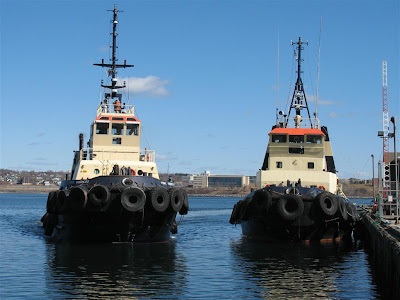.jpg)
Halifax has seen many big tugs over the years, but as they age they are being removed from service and not replaced. With the recent loss of Waker to fire in the Netherlands and the scrapping of Wolraad Woltemade from South Africa, we can expect to see fewer and fewer of these big tugs.
There are several reasons. First is the presence of powerful offshore support vessels. These multi-function boats can perform towing and salvage services and there are usually vessels positioned near to incidents. As a result salvage and towing companies do not need to rely on their own vessels, when there are others for hire.
There is still a need for long distance towing and for salvage vessels, but it is no longer possible for most traditional salvage companies to keep vessels on station without work, in case of need. Some governments, notably the UK, France, the Netherlands and Germany do have big boats on government charter to respond to emergencies in their home waters, but even South Africa is down to one tug for this purpose, and it may soon be withdrawn. if the contract is not renewed.
Many long distance tows have been replaced by submersible ships. We have seen several of these in Halifax in the past two years- all doing work that was formerly done by tugs. The safety record and speed of submersibles means that they will be used more and more in lieu of tugs.
Big dedicated tugs are expensive to operate and maintain. They are being replaced by powerful smaller and more efficient vessels that can carry out most towing requirements, and be kept busy all the time.
So the days of the big traditional ocean tugs may be numbered.
The German tug Oceanic, owned by Bugsier of Hamburg is seen leaving Halifax on December 18, 1982 after towing in the oil rig John Shaw. (Its derrick is visible in the background between the tug's two masts.)
When built in 1969, she and sister Arctic were the most powerful tugs in the world, at 13,000 bhp. Remarkably Oceanic is still in service. She was re-engined in 1985, and after a period of layup from 1987 -1996, has been on contract to the German government, as an emergency towing vessel (ETV.) She is beautifully maintained, but does not get a lot of work. We are unlikely to see her or her kind in Halifax ever again.
.jpg)


.jpg)
.jpg)
.jpg)
.jpg)